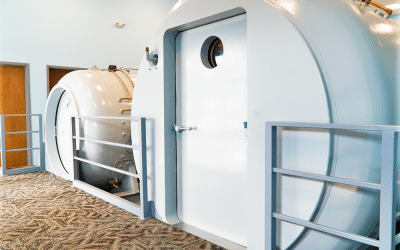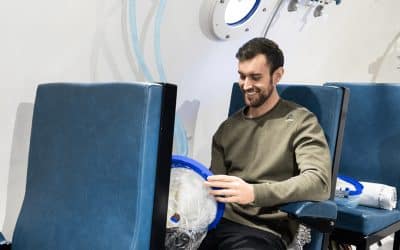Abstract: Parker, Taylor, , , , , , , (). What's new in hyperbaric oxygen therapy? Hospital topics, ;61(2):30-3. https://www.ncbi.nlm.nih.gov/pubmed/10258679
Multiple Sclerosis
Explore the latest research on the use of Hyperbaric Oxygen Therapy (HBOT) to treat Multiple Sclerosis. Extivita maintains an extensive publication database for Multiple Sclerosis and various other indications with therapies such as Hyperbaric Oxygen Therapy, Neurofeedback, Nutritional IV Therapy, Infrared Sauna, and Pulsed Electromagnetic Field Therapy. Explore our database on Acne and Hyperbaric Oxygen Therapy aka, HBOT, below.
For a complete list of indications treated at Extivita, explore the conditions we treat.
Hyperbaric-oxygen treatment of multiple sclerosis. A randomized, placebo-controlled, double-blind study
Several uncontrolled studies have suggested a beneficial effect of hyperbaric oxygen on multiple sclerosis. We studied 40 patients with advanced chronic multiple sclerosis who were randomly divided into two matching groups. The experimental group received pure oxygen, and the placebo group received a mixture of 10 per cent oxygen and 90 per cent nitrogen; both groups were treated at a pressure of 2 atmospheres absolute for 90 minutes once daily, for a total of 20 exposures. Objective improvement occurred in 12 of 17 patients treated with hyperbaric oxygen and in 1 of 20 patients treated with placebo (P less than 0.0001). Improvement was transient in seven of the patients treated with oxygen and long-lasting in five. Those with less severe forms of the disease had a more favorable and lasting response. At one year of follow-up, deterioration was noticed in 2 patients (12 per cent) in the oxygen group, neither of whom had had an initial response, and in 11 patients (55 per cent) in the placebo group, one of whom had had a positive initial response (P less than 0.0008).
Hyperbaric-oxygen treatment of multiple sclerosis. A randomized, placebo-controlled, double-blind study.
Abstract: Several uncontrolled studies have suggested a beneficial effect of hyperbaric oxygen on multiple sclerosis. We studied 40 patients with advanced chronic multiple sclerosis who were randomly divided into two matching groups. The experimental group received...
[Hyperbaric therapy of multiple sclerosis].
Abstract: After a review of theories on the aetiopathogenesis of multiple sclerosis and the theoretical basis of present day therapy of the disease, the known results of general hyperbaric oxygen treatment are listed. A detailed description of the therapeutic action...
[40 cases of multiple sclerosis treated with hyperbaric oxygen therapy].
Abstract: 40 patients affected by Multiple Sclerosis, all in a worsening phase, have been treated with cicles of HBO since 1979. The therapy consists of a first cycle of dayly treatment (5 in a week) for a total of 10-15 sessions (90' at 2 ATA) and subsequently,...
[Hyperbaric oxygenation as an immunostimulant in disseminated sclerosis].
Abstract: Golovkin, Zaĭtsev, Lotovin, , , , , , (1982). [Hyperbaric oxygenation as an immunostimulant in disseminated sclerosis]. Sovetskaia meditsina, 1982 ;(12):70-5. https://www.ncbi.nlm.nih.gov/pubmed/7163875
Exposure of multiple sclerosis patients to hyperbaric oxygen at 1.5–2 ATA. A preliminary report.
Abstract: Neubauer, , , , , , , , (1980). Exposure of multiple sclerosis patients to hyperbaric oxygen at 1.5--2 ATA. A preliminary report. The Journal of the Florida Medical Association, 1980 May;67(5):498-504. https://www.ncbi.nlm.nih.gov/pubmed/7381413
Treatment of multiple sclerosis with monoplace hyperbaric oxygenation.
Abstract: Neubauer, , , , , , , , (1978). Treatment of multiple sclerosis with monoplace hyperbaric oxygenation. The Journal of the Florida Medical Association, 1978 Feb;65(2):101. https://www.ncbi.nlm.nih.gov/pubmed/632780
[Use of hyperbaric oxygen in various neurologic diseases. (Preliminary report)].
Abstract: Boschetty, Cernoch, , , , , , , (1970). [Use of hyperbaric oxygen in various neurologic diseases. (Preliminary report)]. Bratislavske lekarske listy, 1970 Mar;53(3):298-302. https://www.ncbi.nlm.nih.gov/pubmed/4314654




![[Hyperbaric therapy of multiple sclerosis].](https://www.extivita.org/wp-content/uploads/2019/01/HBOT-Emphysema-400x250.jpg)
![[40 cases of multiple sclerosis treated with hyperbaric oxygen therapy].](https://www.extivita.org/wp-content/uploads/2021/01/girl-1641215_1280-400x250.jpg)


![[Use of hyperbaric oxygen in various neurologic diseases. (Preliminary report)].](https://www.extivita.org/wp-content/uploads/2019/08/Hyperbaric-Oxygen-Therapy-North-Carolina-scaled.jpg)